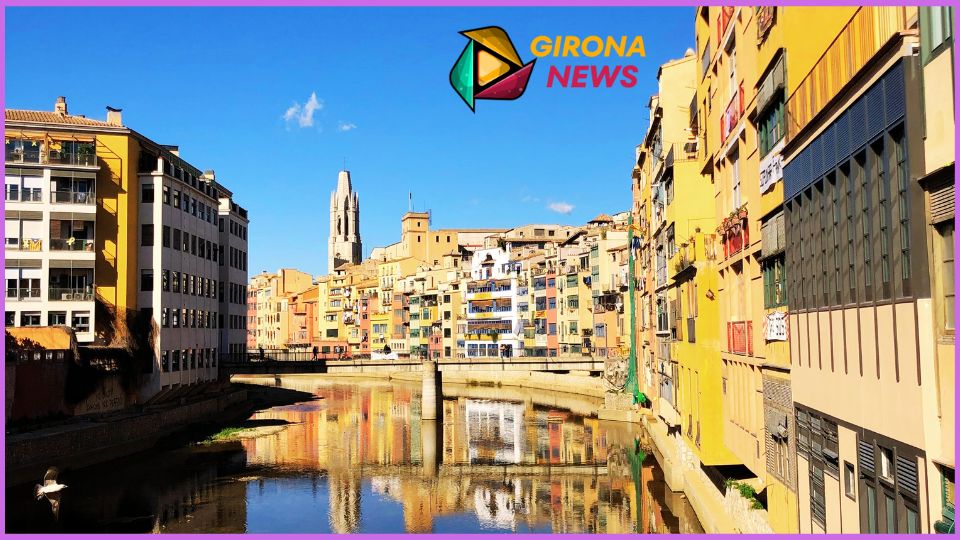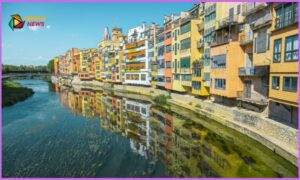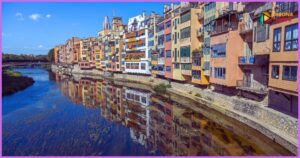Girona and the Beautiful Old Town

Girona, located in the northeastern region of Catalonia, Spain, is a picturesque city known for its rich history, stunning architecture, and vibrant culture. One of the most enchanting aspects of Girona is its beautiful old town, which offers a glimpse into the city’s past and present. In this article, we will explore the charm and attractions of Girona’s old town, highlighting its historical significance, architectural wonders, cultural treasures, and more.
Historical Significance of Girona’s Old Town
Girona’s old town is steeped in history, with roots dating back to Roman times. The city has been inhabited for over 2,000 years, and its old town reflects the layers of history that have shaped it. Walking through the cobblestone streets and narrow alleyways, visitors can admire well-preserved medieval buildings, Romanesque and Gothic architecture, and ancient walls that once protected the city.
Architecture and Landmarks in Girona’s Old Town
One of the most iconic landmarks in Girona’s old town is the Cathedral of Girona, a masterpiece of Catalan Gothic architecture. The cathedral’s imposing façade, intricate sculptures, and majestic bell tower are a testament to the city’s religious heritage. Other notable architectural gems include the Arab Baths, a medieval complex with beautifully preserved Romanesque arches and vaults, and the Sant Pere de Galligants monastery, an impressive example of Romanesque architecture.
Exploring the Jewish Quarter
Girona’s old town is home to one of the best-preserved Jewish quarters in Europe, known as the Call. This historic neighborhood offers a glimpse into the life of the Jewish community that thrived in Girona during the Middle Ages. Visitors can wander through narrow streets lined with centuries-old buildings, visit the Jewish History Museum to learn about the Jewish heritage of the city, and admire the beautifully restored medieval synagogue.
The Cathedral of Girona
The Cathedral of Girona, also known as the Cathedral of Saint Mary of Girona, is a must-visit landmark in the old town. This magnificent cathedral is known for its stunning blend of architectural styles, including Romanesque, Gothic, and Baroque elements. Highlights of the cathedral include its impressive nave, intricate altarpiece, and the Tapestry of the Creation, a masterpiece of medieval art.
Museums and Cultural Attractions
Girona’s old town is home to several museums and cultural institutions that offer insight into the city’s history, art, and culture. The Museum of Art houses a collection of Catalan and Spanish art spanning from the Romanesque period to the present day, while the Cinema Museum showcases the history of cinema with interactive exhibits and film screenings. Other notable museums include the Archaeological Museum, the Jewish History Museum, and the Museum of History of the City.
Culinary Experiences in Girona
Girona’s old town is a paradise for food lovers, with a diverse culinary scene that blends traditional Catalan cuisine with modern gastronomic trends. Visitors can indulge in delicious tapas at local bars, savor Mediterranean dishes at upscale restaurants, and explore the vibrant food markets to sample fresh produce and local specialties. The city is also known for its sweet treats, including xuixos (a type of pastry) and ice cream from renowned artisanal shops.
Outdoor Activities and Nature Spots
Surrounded by breathtaking natural landscapes, Girona offers plenty of outdoor activities for nature enthusiasts. The nearby Pyrenees mountains provide opportunities for hiking, mountain biking, and skiing in the winter months. The picturesque countryside surrounding Girona is ideal for leisurely walks, cycling tours, and picnics amidst vineyards and olive groves. The city is also close to the Costa Brava, known for its pristine beaches and crystal-clear waters, perfect for swimming, sunbathing, and water sports.
Day Trips from Girona
Girona’s strategic location makes it an excellent base for exploring the surrounding region. Visitors can take day trips to nearby towns and attractions, such as the medieval village of Besalú with its well-preserved Jewish quarter, the volcanic region of La Garrotxa with its unique landscape of craters and lava flows, and the Salvador Dalí Triangle, which includes the Dalí Theatre-Museum in Figueres, the artist’s birthplace in Cadaqués, and the Gala Dalí Castle in Púbol.
Festivals and Events in Girona
Throughout the year, Girona hosts a variety of festivals and events that showcase its cultural richness and traditions. The Temps de Flors festival, held in May, transforms the streets and gardens of Girona into a colorful display of floral art, attracting visitors from near and far. The Girona International Film Festival, held in November, celebrates independent cinema with screenings, workshops, and awards ceremonies. Other notable events include the Girona Jazz Festival, the Girona A Cappella Festival, and the Girona Flower Festival.
Shopping and Markets
Girona’s old town is a shopper’s paradise, with a mix of traditional markets, boutique shops, and modern shopping centers. Visitors can explore the local markets to find fresh produce, artisanal crafts, and unique souvenirs. The city is known for its ceramics, textiles, and leather goods, which can be found in the many artisan workshops and boutiques scattered throughout the old town. For a more upscale shopping experience, visitors can head to the Eixample district, where they’ll find designer boutiques and international brands.
Accommodation Options in Girona
Girona offers a range of accommodation options to suit every budget and preference. Visitors can choose from charming boutique hotels in the heart of the old town, luxury hotels with panoramic views of the city, cozy bed and breakfasts in the countryside, and modern apartments for those seeking more independence. Many hotels in Girona are housed in historic buildings, offering a unique blend of comfort and history.
Transportation in and Around Girona
Getting around Girona is easy, thanks to its well-connected transportation network. The city is served by Girona-Costa Brava Airport, which offers domestic and international flights. The train station connects Girona to major cities in Spain, including Barcelona, Madrid, and Valencia. Within the city, visitors can use public buses, taxis, or rental bikes to navigate the streets. Girona’s compact size makes it a walkable city, with most attractions within walking distance of each other in the old town.
Tips for Visiting Girona
Plan your visit during the spring or fall for milder weather and fewer crowds.
Wear comfortable shoes for exploring the cobblestone streets of the old town.
Respect local customs and traditions, especially when visiting religious sites.
Try the local cuisine, including traditional Catalan dishes and regional specialties.
Learn a few basic phrases in Catalan to enhance your interaction with locals.
Girona’s old town is a treasure trove of history, culture, and natural beauty, offering visitors a unique blend of ancient charm and modern allure. Whether you’re strolling through medieval streets, admiring centuries-old architecture, or indulging in delicious cuisine, Girona’s old town is sure to captivate your senses and leave you with lasting memories of this enchanting city.





